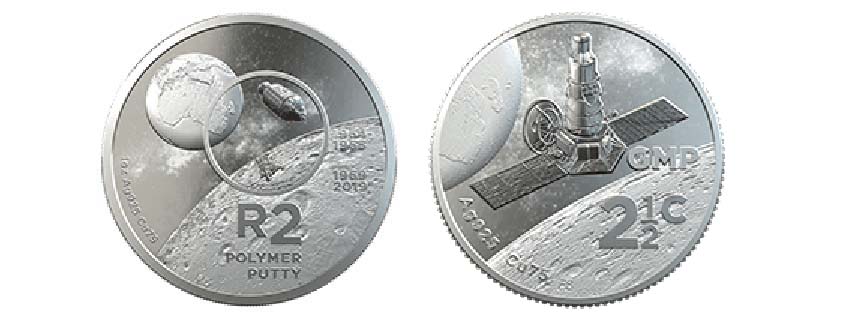The South African Mint is celebrating the 50th anniversary of the first moon landing with its “South African inventions” series, focusing on the only South African product to ever go to the moon – Pratley Putty.
“I think that all at Pratley can be justifiably proud of their association with the company and its achievements. It is indeed quite a prestigious honour to be recognised in a country’s commemorative coin series,” comments CEO Kim Pratley. “This is testament to our ongoing ethos of innovation and technical excellence.”
During the 1960s, Pratley founder George Montague (Monty) Pratley, assisted by chemist Frank Robinson, invented the world’s first epoxy putty.
Initially it was intended to be used internally for insulating and affixing terminals to cast iron electrical junction boxes. However, the product was subsequently introduced into the local market as Pratley Plastic Putty, a name that ultimately became Pratley Putty.
An agreement to manufacture the product under licence in the US was concluded with Atlas Minerals in Pennsylvania, which introduced the product to the National Aeronautics and Space Administration (NASA) even before it could enter production.
Consequently, when NASA decided to use the product aboard its Ranger moon-landing craft, the product was supplied from South Africa via Atlas Minerals. Hence it became the only South African product to go to the moon.
The South African Mint states: “This putty was used on the Ranger spacecraft produced and flown to study the moon. The American spacecraft was the first to land on the moon, and thus helped lay the groundwork for the successful moon landing and safe return of a human during the NASA Apollo XI mission.”
In 2016, the South African Mint embarked on a project whereby it annually struck a series of silver commemorative collectible coins that recognise some notable South African inventions. Highlighting globally-relevant firsts by South Africans, the “South African inventions” series has previously featured the dolos, a reinforced concrete block used in breakwater construction, followed by the first successful human-to-human heart transplant in 2017, and the Computed Tomography (CT) scan in 2018.

